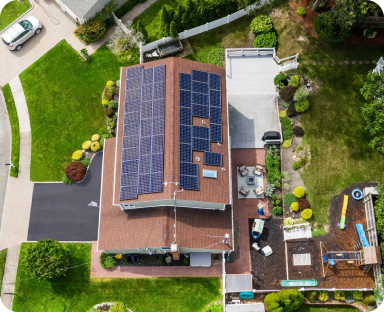Guest Post by EmPower Solar Student Competition Winner, 2013
Visiting the U.S. Solar Decathlon was an experience that exposed us to a wide variety of new ideas and interesting technologies, and it showed that students can be some of the most ingenious and innovative creators in our world today.
Seeing the groundbreaking ideas that students have brought forth in this competition, as well as the nationwide and international community, inspires confidence for our futures both in renewable energy and in cooperation in general.
One of the exceptional things about this contest that sets it apart from others is that every single house was totally different from every other. To have missed seeing even one would have taken away from the experience because there were unique approaches and out-of-the-box thinking to be found everywhere.
My favorite homes at the Decathlon were those that seemed really livable. Although that seems like perhaps it’s a given, what I mean by that is that many houses, while interesting from an artistic or engineering perspective, didn’t seem to be practical for everyday living. Despite this fact, many of those abstract houses placed very well in the competition. Although half of the competition was based on quantitative “measured contests”, which one could not appreciate simply by touring the houses, and surely affected the rankings, I would have liked to see the more practical houses win instead because they send a more relevant message in my opinion.
Houses that are more reasonable and compatible with our current lifestyles have a better chance of teaching people to alter their lives and homes to be more sustainable and environmentally friendly because they model more reasonable changes and innovations instead of total overhauls of houses that, while attractive and interesting in a sterile setting, don’t seem reasonable in the real world.
My favorite home was the Stanford house. I had actually researched it prior to the competition and it appealed to me then as well. Its greatest strength was a really effective implementation of the CORE concept: a central module that contains all of the technical components of the house that can be delivered and a house of varied configuration built around it. While a number of teams had similar features, Stanford’s execution was the cleanest and most effective. I also appreciated the automation system in this home. While many of these systems were present in the competition, I thought Stanford’s was full-featured without feeing contrived or unnecessary.
My second favorite house was the Las Vegas house, which ranked second. I especially appreciated the aesthetic aspects of the house and how it resonated with its desert origins. The house had an appropriate amount of storage space. A criticism I had of many of the other houses was that real people need more space to store belongings, as well as living space that is compatible with one’s furniture. Many people have family furniture that has sentimental value, and this home could accommodate that while others couldn’t. My only criticism was that the main living spaces in this home were very long and thin instead of more evenly shaped, which might have felt like a more convenient living environment.
Another favorite was the Stevens house. Interestingly, this was the last house that I visited, but it quickly became one of my favorites. It incorporated a green roof, an element I found very appropriate and should have been included in more houses. What was most exceptional about this house, however, was its layout. It used an L-shaped configuration with a large wraparound porch. Although all of the houses were limited to 1000 square feet, this house felt at least 50% larger than most other houses. Smaller square footage improves energy consumption by putting less stress on the HVAC system, but knowing how to effectively lay out that space is an indispensable skill.
I also enjoyed having the opportunity to ride an e-bike, which were available for test-riding at the event. These bikes have internal sensors that sense the amount of effort you are riding with and match your work by powering a motor with energy from a battery. Not only were these bikes a lot of fun to ride, but they also have potential to reduce the use of cars in certain areas. It is not always possible to ride a regular bike to commute or attend an event. Some areas are very hilly, and one may need to be well-dressed for an event or job and therefore cannot dress for athletics. These bikes, while less ideal in terms of energy usage than traditional bikes, could bridge a gap to allow more people to ride bikes more of the time, saving fuel and reducing emissions.
The Solar Decathlon is an incredibly unique event and a great learning experience. I’m very glad to have been able to attend, and I’ve been given many ideas on ways to improve my own ecological impact, as well as what I may want to do as a career. I’m very grateful to EmPower for this special opportunity and I wish good luck to future entrants in the EmPower Student Solar Competition!
Stop overpaying for electric. Go solar with $0 down.

Stop overpaying for electric. Go solar with $0 down.
About the Author
EmPower Solar develops, engineers, installs, and services solar and battery systems for residential and commercial clients. Since 2003, EmPower Solar has empowered thousands of New York homeowners and businesses with 47 megawatts of distributed solar. Its vision is to create a new energy paradigm powered by clean, renewable energy for a more prosperous, healthy, and civil world. The company culture is defined by the EmPowering Way, which results in consistent 5-star customer service reviews. For more information visit empower-solar.com.